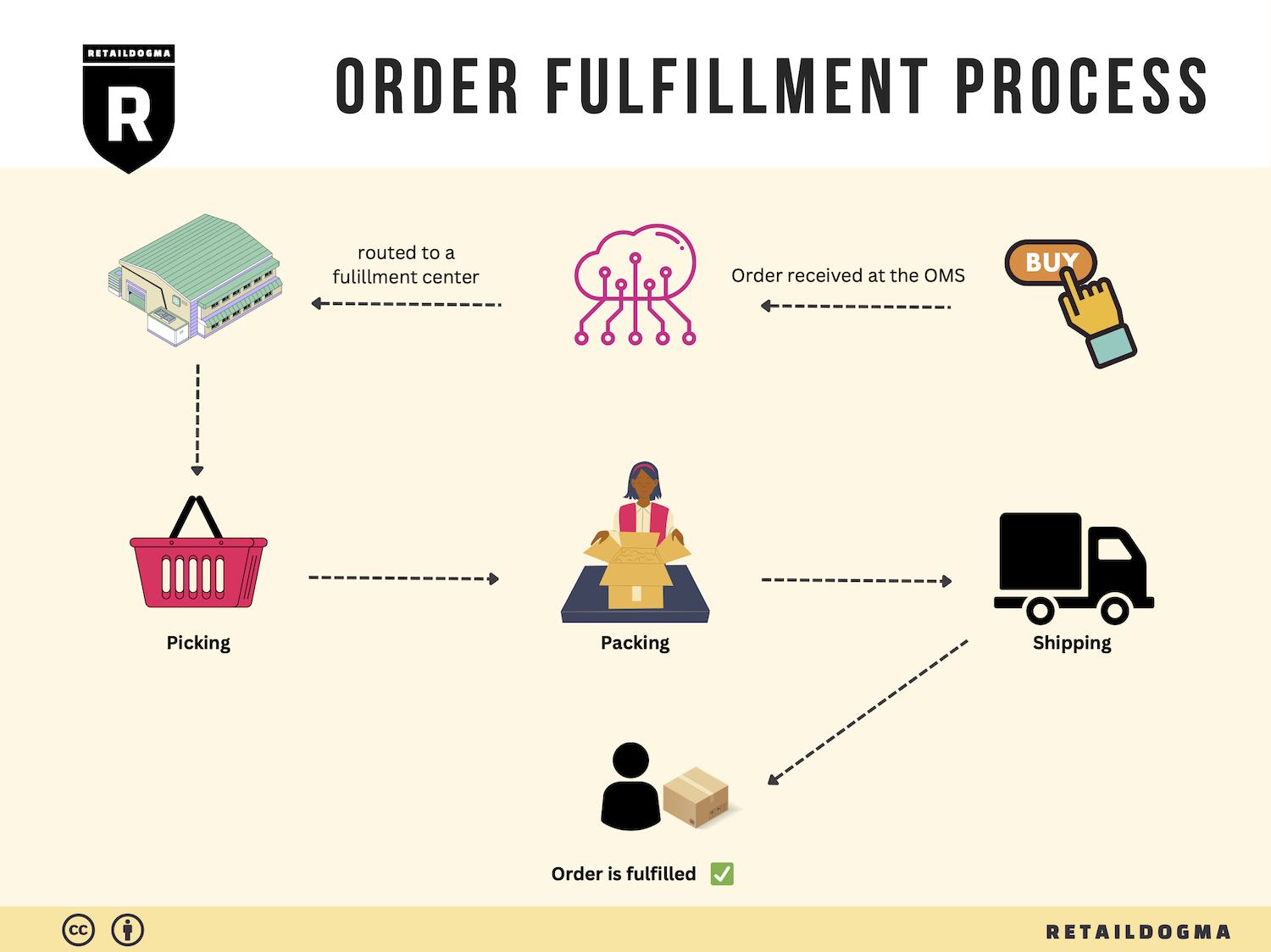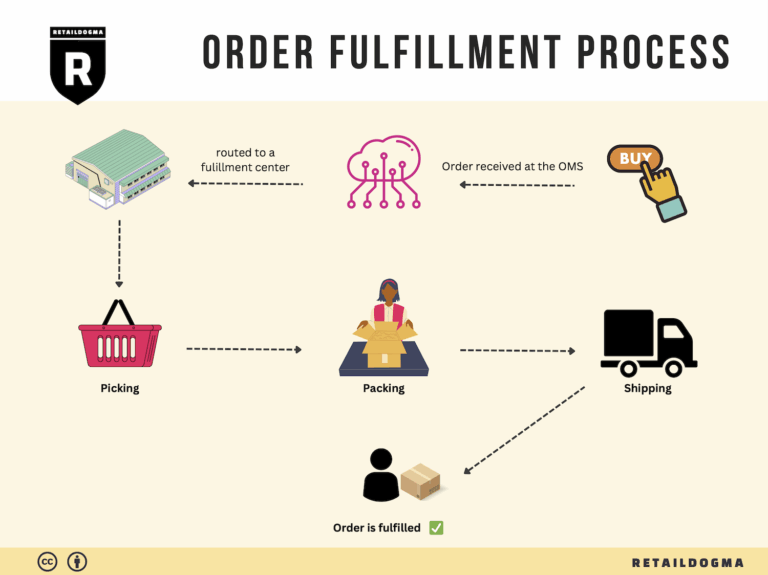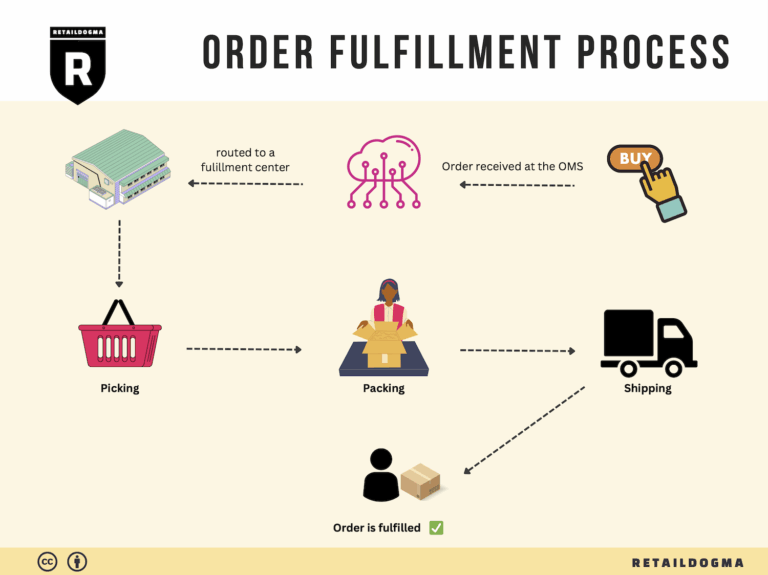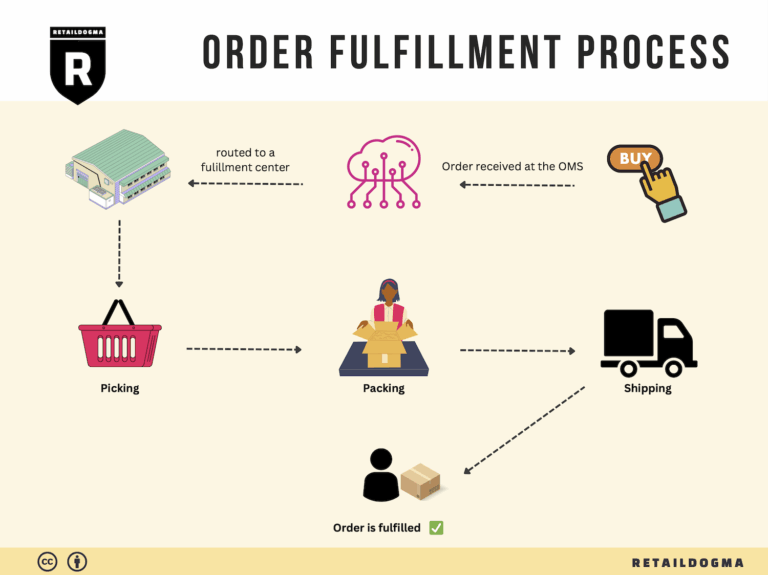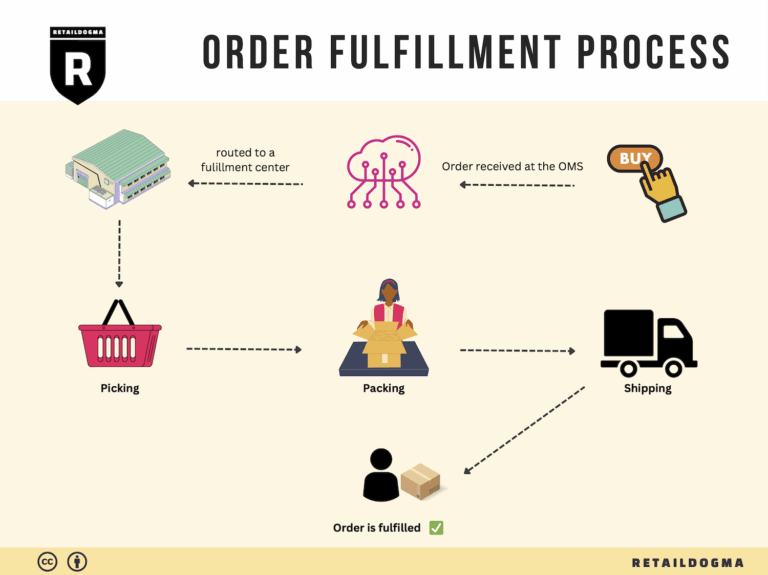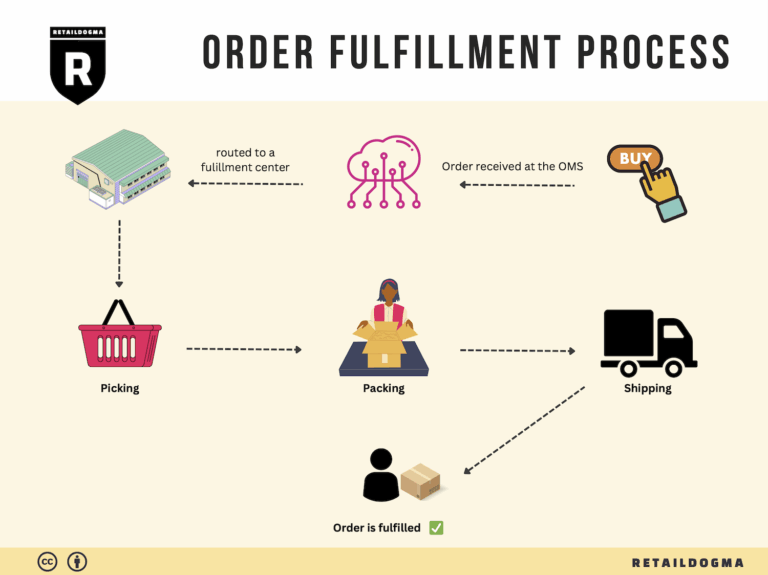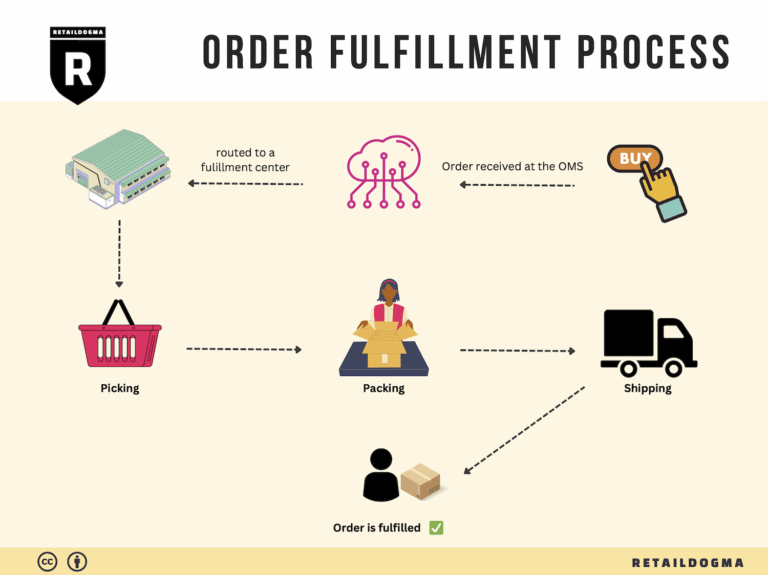Ecommerce Fulfillment Services: The Ultimate Guide (2025)
What is E-commerce Fulfillment? An Introduction for Growing Businesses
Understanding the Challenges of E-commerce Fulfillment
As an e-commerce business owner, you may find yourself grappling with a critical pain point: the overwhelming task of packing and shipping orders. Managing inventory, processing orders, and ensuring timely delivery can quickly become burdensome, especially as your sales grow. This complexity not only consumes valuable time and resources but also risks customer satisfaction if orders are delayed or inaccurately fulfilled.
Fulfillment, in its simplest form, is the process of getting a product from your warehouse to your customer’s doorstep. This includes several key steps: receiving inventory, storing products, picking and packing orders, and shipping them out. As your business scales, understanding the various fulfillment options becomes essential to maintaining efficiency and customer satisfaction.
What This Guide Will Cover
In this guide, we will explore the different fulfillment models available to growing e-commerce businesses. You’ll learn about Third-Party Logistics (3PL), Fulfillment by Amazon (FBA), and other options that can help streamline your operations. Each model has its advantages and potential drawbacks, and we will break down these differences to help you find the best fit for your unique business needs.
We will also cover the core services involved in e-commerce fulfillment. This includes inventory management, order processing, shipping logistics, and returns handling. Understanding these services will empower you to make informed decisions about which aspects of fulfillment you can manage in-house and which ones might be better outsourced to a fulfillment partner.
Choosing the right fulfillment partner is crucial for your business’s success. We will provide insights on what to look for in a fulfillment provider, including their technology capabilities, customer service, and performance metrics. Additionally, we’ll discuss pricing models to help you understand how costs are structured and what to expect as you scale.
Empowering Your Business Decisions
The ultimate goal of this guide is to empower you to make smart, strategic decisions about your logistics. By demystifying e-commerce fulfillment and providing actionable insights, we aim to equip you with the knowledge needed to enhance your operations, improve customer satisfaction, and drive growth. Whether you’re just starting or are ready to scale, understanding fulfillment is key to your e-commerce success.
What You’ll Learn In This Guide
- What is E-commerce Fulfillment? An Introduction for Growing Businesses
- The Order Fulfillment Process: From ‘Buy’ Button to Customer’s Door
- Comparing Fulfillment Models: In-House vs. 3PL vs. Dropshipping
- A Deep Dive into Amazon FBA: Pros, Cons, and Who It’s For
- Core Services Offered by Fulfillment Centers
- How to Choose a Fulfillment Partner: A 6-Point Checklist
- Understanding Fulfillment Pricing: A Breakdown of Common Fees
- Frequently Asked Questions (FAQs) about Fulfillment
- Conclusion: Is Outsourcing Fulfillment the Right Move for Your Business?
- Important Disclaimer
The Order Fulfillment Process: From ‘Buy’ Button to Customer’s Door
1. Receiving Inventory
The first step in the order fulfillment process is receiving inventory. When new stock arrives at your fulfillment center, it undergoes a thorough inspection to ensure that the quantities and conditions match the purchase order. This step is crucial as it establishes the foundation for accurate inventory management and sets the tone for the entire fulfillment operation.
During this phase, each item is assigned a Stock Keeping Unit (SKU), which is a unique identifier used to track the product throughout the supply chain. Effective receiving processes help to minimize errors that can lead to stock discrepancies, ultimately affecting customer satisfaction. A well-organized receiving process ensures that the inventory is accurately recorded in your system, which is vital for maintaining inventory accuracy and preventing stockouts or overstocks.
2. Warehouse Storage
Once the inventory has been received and accounted for, the next step is warehouse storage. Efficient storage solutions maximize space and improve accessibility, allowing for quicker retrieval of products when orders are placed. Different storage methods, such as pallet racking or shelving, may be employed based on the type and volume of products.
This step is important because it directly impacts the speed of order fulfillment. A well-organized warehouse with clearly labeled zones and systematic layouts reduces the time spent locating items, leading to increased order processing efficiency. Utilizing advanced warehouse management systems (WMS) can further enhance this process by automating inventory tracking and storage assignments. This ensures that products are stored in a manner that optimizes picking routes and minimizes handling time.
3. Order Picking
Order picking is the process of selecting items from storage to fulfill a customer order. This step is critical, as it directly affects order accuracy and customer satisfaction. When an order is received, a pick list is generated, detailing the items and their locations within the warehouse.
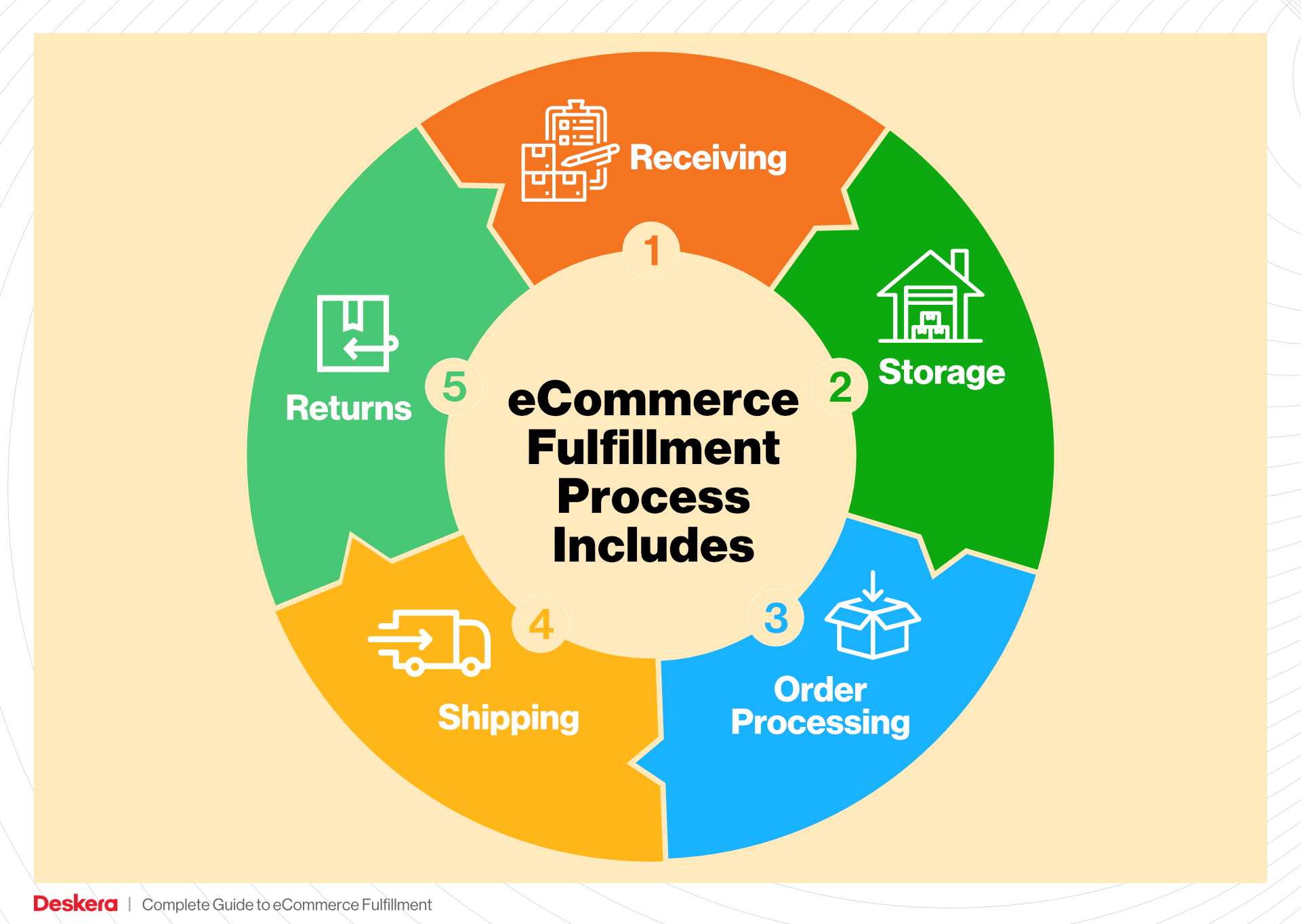
There are several picking methods, including single order picking, batch picking, and zone picking, each suited for different operational scales and order volumes. The choice of picking method can significantly influence the speed and efficiency of the fulfillment process. For example, batch picking allows for multiple orders to be picked simultaneously, thereby reducing the number of trips made within the warehouse.
Ensuring accuracy during this step is paramount, as mistakes can lead to incorrect shipments, returns, and ultimately, dissatisfied customers. Employing technology such as barcode scanners or RFID systems can help ensure that the correct items are picked and reduce human error.
4. Order Packing
After the items have been picked, they move to the order packing stage. Here, products are carefully packed into boxes or envelopes, ensuring that they are protected during transit. This step is vital for preventing damage and ensuring that the order arrives at the customer’s location in perfect condition.
Packing also involves selecting the right materials, such as bubble wrap, packing peanuts, or custom-sized boxes, which can enhance the unboxing experience for customers. Additionally, including packing slips or invoices in the shipment can provide customers with essential information about their order.
Effective packing strategies can also help optimize shipping costs by minimizing package size and weight. Utilizing a packing optimization software can assist in determining the most efficient packing configurations, reducing waste and cost while ensuring compliance with carrier requirements.
5. Shipping & Delivery
The final step in the order fulfillment process is shipping and delivery. Once orders are packed, they are labeled and handed over to carriers for transportation to the customer’s address. This stage is crucial, as timely delivery significantly influences customer satisfaction and retention.
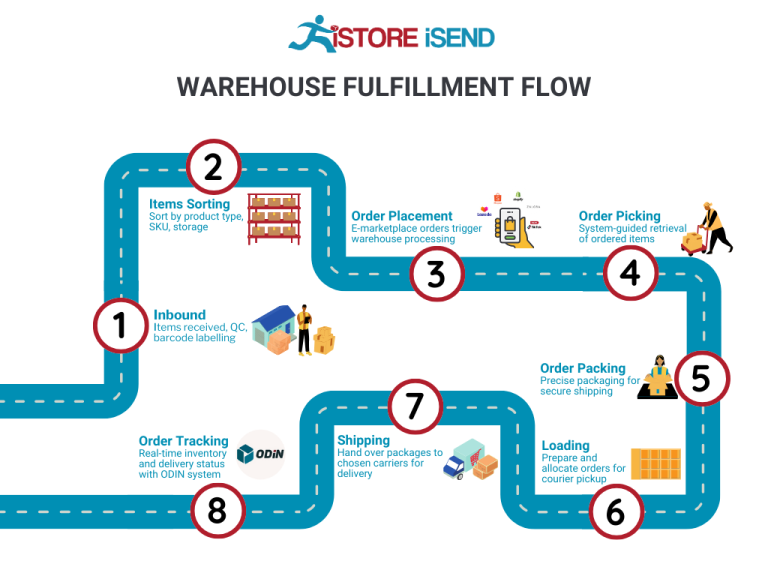
To enhance shipping efficiency, fulfillment centers like Aero Fulfillment utilize a Best Way Freight approach, where shipments are routed using the most economical and efficient option available, whether through less-than-truckload (LTL), full-truckload (FTL), or parcel delivery services. This not only helps in reducing shipping costs but also improves delivery timelines.
Tracking systems play a key role in this stage, allowing customers to monitor their shipments in real time. Providing customers with accurate tracking information can greatly enhance their experience and build trust in your brand. A smooth shipping process, combined with reliable delivery, is essential for maintaining a positive customer relationship and fostering repeat business.
In conclusion, mastering the order fulfillment process is vital for e-commerce businesses aiming to scale. Each step—from receiving inventory to shipping and delivery—requires careful attention and strategic execution to ensure that customer expectations are met and exceeded.
Comparing Fulfillment Models: In-House vs. 3PL vs. Dropshipping
Comparison of Fulfillment Models
| Model | Who Handles Inventory | Best For (Business Stage) | Key Advantage | Key Disadvantage |
|---|---|---|---|---|
| In-House Fulfillment | The business itself | Established businesses | Full control over inventory | High overhead costs and resource demands |
| Third-Party Logistics (3PL) | Third-party provider | Growing businesses | Cost efficiency and scalability | Less control over inventory and processes |
| Dropshipping | Supplier | Startups and small businesses | Low initial investment | Dependency on suppliers for fulfillment |
In-House Fulfillment
In-house fulfillment involves managing all aspects of inventory and order processing within the business itself. This model is typically best suited for established businesses that have the resources to invest in warehousing, staffing, and logistics. The key advantage of in-house fulfillment is that it allows for complete control over inventory management, order accuracy, and customer service. Businesses can implement their own processes and standards, ensuring quality and consistency. However, this model comes with significant disadvantages, including high overhead costs associated with warehousing, labor, and technology investments. Additionally, managing fulfillment in-house can divert focus from core business activities like marketing and product development, potentially stifling growth.
Third-Party Logistics (3PL)
Third-party logistics (3PL) providers offer a comprehensive solution for businesses looking to outsource their fulfillment operations. This model is particularly beneficial for growing businesses that need to scale quickly without the heavy investments associated with in-house fulfillment. By partnering with a 3PL, companies can benefit from cost efficiencies achieved through shared resources, advanced technology, and established shipping networks. For instance, Aero Fulfillment Services leverages its centralized location and advanced systems to ensure fast and accurate order processing. However, the trade-off is a loss of direct control over inventory and fulfillment processes. Businesses must rely on the 3PL’s capabilities and responsiveness, which can be a concern if the partnership does not align perfectly with their operational needs.
Dropshipping
Dropshipping is a fulfillment model that allows businesses to sell products without holding inventory. Instead, when a customer places an order, the business purchases the item from a supplier, who then ships it directly to the customer. This model is ideal for startups and small businesses with limited capital, as it requires little to no upfront investment in inventory. The primary advantage of dropshipping is the low risk and flexibility it offers; businesses can test new products without significant financial commitment. However, the key disadvantage is the reliance on suppliers for fulfillment, which can lead to issues such as stockouts, longer shipping times, and less control over product quality. Additionally, businesses may face challenges in managing customer expectations and providing support for issues that arise post-purchase, as they do not handle the inventory directly.
Conclusion
Choosing the right fulfillment model is critical for e-commerce businesses aiming to scale effectively. Each model—whether in-house fulfillment, 3PL, or dropshipping—offers unique advantages and disadvantages that can significantly impact operational efficiency and customer satisfaction. Established businesses may find in-house fulfillment beneficial for maintaining control, while growing companies may prefer the scalability and cost-efficiency of a 3PL. On the other hand, startups might lean towards dropshipping to minimize risk and investment. Ultimately, the decision should align with the business’s overall strategy, resources, and growth objectives.
A Deep Dive into Amazon FBA: Pros, Cons, and Who It’s For
Understanding Fulfillment by Amazon (FBA)
Fulfillment by Amazon (FBA) is a service offered by Amazon that allows sellers to store their products in Amazon’s fulfillment centers. Amazon then takes care of storage, packaging, shipping, and customer service on behalf of the sellers. This service is particularly beneficial for e-commerce businesses looking to scale quickly and efficiently, as it leverages Amazon’s vast logistics network and customer trust.
How FBA Works
-
Setup: Sellers create an Amazon Seller account and choose the FBA option. They then send their products to Amazon’s designated fulfillment centers.
-
Storage: Products are stored in Amazon’s warehouses until sold. The seller can monitor inventory levels and restock as needed through the Seller Central dashboard.
-
Order Processing: When a customer orders a product, Amazon picks, packs, and ships the item directly to the customer. This includes all necessary shipping materials, and the seller does not have to handle these logistics.
-
Customer Service: Amazon manages all aspects of customer service, including returns and refunds, allowing sellers to focus on growing their businesses rather than managing day-to-day operations.
-
Fees: Sellers are charged fees for storage and fulfillment, which vary based on the size and weight of the products.
Pros of Fulfillment by Amazon
Prime Eligibility
One of the most significant advantages of using FBA is the ability to offer products with Amazon Prime eligibility. Prime members are more likely to purchase items marked with the Prime badge due to the promise of fast, free shipping. This can lead to increased sales and higher visibility for your products.
Customer Trust
Amazon is a well-established brand with a strong reputation for customer service. By utilizing FBA, sellers can leverage this trust, as customers often feel more secure purchasing from sellers who use Amazon’s fulfillment services. This can lead to higher conversion rates and repeat business.
Multi-Channel Fulfillment
FBA isn’t limited to just Amazon.com. Sellers can use FBA to fulfill orders from other sales channels, such as their own website or other e-commerce platforms. This multi-channel fulfillment capability allows sellers to streamline their operations and manage inventory across various platforms from a single source.
Efficient Logistics
Amazon’s logistics network is one of the most sophisticated in the world. By using FBA, sellers can benefit from Amazon’s advanced supply chain technologies, ensuring fast and reliable delivery to customers. This efficiency can significantly improve customer satisfaction and retention.
Scalability
As businesses grow, managing fulfillment can become increasingly complex. FBA allows sellers to scale their operations without the need to invest heavily in warehousing and logistics infrastructure. Sellers can focus on marketing and product development while Amazon handles fulfillment.
Cons of Fulfillment by Amazon
High Fees
While FBA offers numerous benefits, it comes with costs that can cut into profit margins. Sellers pay various fees, including fulfillment fees, storage fees, and additional charges for long-term storage. These costs can add up, particularly for businesses with lower-priced items or slow-moving inventory.
Strict Inventory Rules
Amazon has specific guidelines regarding inventory management, including restrictions on certain types of products and inventory limits. Sellers must adhere to these rules to avoid penalties or removal of their listings. This can be particularly challenging for businesses that require more flexibility in managing their inventory.
Commingling Risks
FBA uses a commingling system, meaning that products from different sellers may be stored together. While this can lead to faster fulfillment times, it also poses a risk. If a customer receives a defective or damaged item, it can reflect poorly on the seller, even if the issue originated from another seller’s inventory. This can lead to negative reviews and potential account issues.
Less Control Over Branding
When using FBA, sellers have limited control over the packaging and presentation of their products. Amazon handles the packing, which means that branding opportunities through packaging are reduced. This can be a disadvantage for brands looking to create a unique unboxing experience for customers.
Dependence on Amazon
Relying heavily on FBA can make businesses vulnerable to Amazon’s policies and changes. If Amazon alters its fees, terms of service, or fulfillment processes, sellers may need to adapt quickly or face challenges. This dependence can limit a seller’s flexibility in the long run.
Who is FBA Best For?
Fulfillment by Amazon is ideal for e-commerce businesses that:
-
Have a Product Line Suitable for Amazon: Products that are small, lightweight, and in high demand tend to perform well with FBA due to lower fulfillment costs and faster shipping times.
-
Are Looking for Scalability: Businesses that anticipate rapid growth or seasonal spikes in sales can benefit from the scalability that FBA provides without the need for significant investment in logistics infrastructure.
-
Prioritize Customer Trust: Brands that want to leverage Amazon’s credibility and customer service capabilities will find FBA advantageous, particularly in gaining access to Prime members.
-
Sell Across Multiple Channels: Sellers who operate on various e-commerce platforms can use FBA for multi-channel fulfillment, simplifying their logistics and inventory management.
-
Want to Focus on Growth: Entrepreneurs who prefer to focus on product development, marketing, and sales rather than logistics will find FBA to be an effective solution.
In conclusion, while FBA offers numerous benefits that can significantly enhance an e-commerce business’s operational efficiency and customer satisfaction, it also comes with challenges that sellers must carefully evaluate. Understanding these pros and cons will help businesses make informed decisions about whether to incorporate FBA into their fulfillment strategy.
Core Services Offered by Fulfillment Centers
Inventory Management & Warehousing
Effective inventory management and warehousing are foundational elements for any e-commerce business. Fulfillment centers like Aero Fulfillment offer sophisticated systems to track inventory levels in real-time, ensuring that stock is always available when needed. This service involves receiving goods, storing them securely, and keeping accurate records of inventory quantities and locations.
Benefits:
1. Optimized Stock Levels: By leveraging advanced inventory management technologies, fulfillment centers can help businesses maintain optimal stock levels, reducing the risk of stockouts and overstock situations.
2. Increased Efficiency: Centralized warehousing enables businesses to streamline their supply chain processes, facilitating quicker order processing and shipment.
3. Data-Driven Decisions: With real-time inventory tracking, e-commerce businesses can make informed decisions about reordering, promotions, and product launches based on accurate data analytics.
Pick and Pack Services
Pick and pack services are crucial for ensuring that each customer order is fulfilled accurately and efficiently. This process involves selecting the correct products from the warehouse, packing them securely, and preparing them for shipment. Fulfillment centers utilize sophisticated systems to streamline this process, which can include automated picking technologies and quality control checks.
Benefits:
1. Accuracy and Speed: High order accuracy rates, such as the 99.90% achieved by Aero Fulfillment, ensure that customers receive the right products, which directly impacts customer satisfaction and loyalty.
2. Scalability: As an e-commerce business grows, the volume of orders can fluctuate significantly. Fulfillment centers can easily scale their pick and pack operations to handle increased order volumes without compromising quality.
3. Cost-Effectiveness: Outsourcing pick and pack services to a fulfillment center can reduce labor costs and overhead associated with managing in-house operations, allowing businesses to focus on core activities.
Kitting and Assembly
Kitting and assembly services involve grouping multiple products into a single package or preparing items for sale. This can include assembling products, creating gift sets, or bundling items together for promotional purposes. Fulfillment centers can handle these complex tasks efficiently, ensuring that products are ready for shipment as soon as orders are received.
Benefits:
1. Enhanced Customer Experience: Offering customized kits or bundles can attract customers and increase average order value, leading to higher sales.
2. Streamlined Operations: By outsourcing kitting and assembly, e-commerce businesses can save time and resources, allowing them to focus on marketing and customer engagement.
3. Flexibility: Fulfillment centers can quickly adapt to changing market trends or seasonal demands, enabling businesses to offer new products or promotions with minimal lead time.
Returns Management (Reverse Logistics)
Returns management, also known as reverse logistics, is a critical service provided by fulfillment centers. This process involves handling customer returns efficiently, assessing returned items, restocking them if possible, and managing any necessary repairs or replacements. Effective returns management is vital for maintaining customer satisfaction and loyalty in the e-commerce landscape.
Benefits:
1. Improved Customer Satisfaction: A streamlined returns process can enhance the overall shopping experience, making customers more likely to purchase again. This is particularly important in e-commerce, where the ease of returns can influence buying decisions.
2. Cost Control: By effectively managing returns, fulfillment centers can minimize losses associated with unsellable inventory. They can assess whether items can be refurbished or repackaged, thus recovering value.
3. Data Insights: Analyzing return patterns can provide valuable insights into product quality and customer preferences, allowing businesses to make informed decisions about inventory and product offerings.
Conclusion
Utilizing the core services offered by fulfillment centers can significantly enhance the operational efficiency of e-commerce businesses. From inventory management and warehousing to pick and pack services, kitting and assembly, and returns management, these services provide scalable, cost-effective solutions tailored to meet the unique needs of each business. By partnering with a reliable fulfillment center, e-commerce entrepreneurs can focus on growth and customer engagement, confident that their logistics and fulfillment processes are in expert hands.
How to Choose a Fulfillment Partner: A 6-Point Checklist
Location & Warehouse Network
Importance: The geographical location of your fulfillment partner’s warehouses can significantly impact shipping times and costs. A partner with strategically located facilities can ensure quicker deliveries and lower shipping expenses, enhancing customer satisfaction.
Questions to Ask:
1. Where are your warehouses located, and how do they align with my customer base?
2. Do you have a network of warehouses that can facilitate multi-channel distribution?
3. How do you handle shipping to international customers or remote locations?
Technology & Integrations
Importance: A robust technology platform is essential for seamless operations. Your fulfillment partner should offer systems that integrate easily with your e-commerce platform, inventory management tools, and other software solutions. This ensures real-time data visibility, order tracking, and efficient inventory management.
Questions to Ask:
1. What technology do you use for order processing, inventory management, and tracking?
2. Can your systems integrate with my existing e-commerce platform (e.g., Shopify, WooCommerce)?
3. How do you ensure data security and compliance with regulations?
Specializations (e.g., Cold Storage, Oversized Items)
Importance: If your business requires specific handling, such as temperature-controlled storage for perishables or specialized handling for oversized items, it’s crucial to choose a partner with the right capabilities. This ensures that your products are stored and shipped according to industry standards and requirements.
Questions to Ask:
1. What special services do you offer, such as cold storage, hazardous materials handling, or kitting?
2. Can you accommodate unique packaging or shipping requirements for my products?
3. Do you have experience in handling products similar to mine?
Scalability & Capacity
Importance: As your business grows, your fulfillment needs may change. A good fulfillment partner should be able to scale operations to accommodate increased order volume, seasonal fluctuations, or expansion into new markets without compromising service quality.
Questions to Ask:
1. How do you handle peak seasons or unexpected surges in order volume?
2. What is your capacity for growth, and how quickly can you adapt to my changing needs?
3. Are there any limitations to your scalability that I should be aware of?
Pricing and Contracts
Importance: Understanding the cost structure of your fulfillment partner is essential for budgeting and profitability. Look for transparency in pricing and flexible contract terms that can adapt to your business’s needs.
Questions to Ask:
1. Can you provide a detailed breakdown of your pricing structure, including any hidden fees?
2. What is the length of your contracts, and is there flexibility for renegotiation?
3. How do you handle pricing adjustments based on order volume or service changes?
Customer Support & Reviews
Importance: A reliable customer support system is critical for addressing issues that may arise during order fulfillment. Additionally, researching reviews and testimonials can provide insights into the partner’s reliability and service quality.
Questions to Ask:
1. What type of customer support do you offer (e.g., dedicated account manager, 24/7 support)?
2. How do you handle customer complaints or issues related to order fulfillment?
3. Can you provide references or case studies from businesses similar to mine?
Conclusion
Selecting the right fulfillment partner is a crucial decision that can significantly influence your e-commerce business’s success. By considering the factors outlined in this checklist, you can make a more informed choice that aligns with your operational needs and business goals. Remember, the right partner should not only meet your current requirements but also grow with you as your business evolves.
Understanding Fulfillment Pricing: A Breakdown of Common Fees
Initial Setup Fees
When partnering with a fulfillment service, businesses often encounter initial setup fees. These fees cover the costs associated with onboarding your account, integrating systems, and establishing processes tailored to your specific needs. The setup process typically includes the configuration of inventory management systems, training on software usage, and initial consultations to understand your business model.
How It’s Calculated:
Initial setup fees vary significantly based on the complexity of your operations and the fulfillment provider’s pricing structure. Providers may charge a flat fee or base it on the number of SKUs you have, the level of customization required, or the specific services you will utilize. It’s essential to clarify what is included in these fees to avoid unexpected costs.
Receiving Fees
Receiving fees are charged when your inventory arrives at the fulfillment center. This process includes unloading shipments, checking items for quality and accuracy, and entering them into the inventory management system. Efficient receiving processes are crucial to maintaining inventory accuracy and minimizing delays in order fulfillment.
How It’s Calculated:
Receiving fees are usually charged per hour or based on the number of units received. Some providers may implement a tiered structure where the cost per unit decreases as the volume of received items increases. Be sure to inquire about any additional charges for special handling or inspections, which can add to the total cost.
Storage Fees (per pallet/bin)
Storage fees are incurred for the space your inventory occupies in the fulfillment center. These fees can significantly impact your overall fulfillment costs, especially for businesses with large inventories or slow-moving products. Understanding the storage fee structure is essential for effective inventory management and cost control.
How It’s Calculated:
Storage fees are typically charged on a monthly basis and can be calculated per pallet or per bin. The cost may vary depending on the type of products stored (e.g., hazardous materials may incur higher fees) and the length of time they remain in storage. Some fulfillment centers also offer tiered pricing, where businesses with larger volumes benefit from lower rates. Be aware of any additional charges for long-term storage, which can apply if inventory remains unsold for an extended period.
Pick & Pack Fees (per item/order)
Pick and pack fees are charged for the labor involved in selecting items from the inventory, packaging them, and preparing them for shipment. This process is crucial for ensuring that orders are fulfilled accurately and efficiently, directly impacting customer satisfaction.
How It’s Calculated:
These fees are generally calculated per item or per order, with some fulfillment centers offering a bundled rate for orders containing multiple items. Additional charges may apply for special packaging requests, custom inserts, or kitting services. Understanding the pick and pack fee structure helps businesses budget accurately and optimize their order fulfillment processes.
Shipping Fees
Shipping fees encompass the costs associated with transporting your products to customers. This is often one of the largest expenses in the fulfillment process. Shipping fees can vary based on factors such as the size and weight of packages, shipping distance, and the chosen carrier.
How It’s Calculated:
Shipping fees can be calculated using various methods, including flat-rate shipping, weight-based pricing, or zone-based pricing, which considers the distance to the delivery location. Additionally, fulfillment providers often negotiate shipping rates with carriers to offer discounted rates to their clients. It’s wise to explore these options to find the most cost-effective shipping solution for your business.
Conclusion: Tips for Obtaining an Accurate Quote
-
Be Transparent: Provide potential fulfillment partners with comprehensive information about your business model, order volume, and specific needs. This transparency allows for more accurate quotes and tailored services.
-
Understand Fee Structures: Familiarize yourself with the different fee types and how they apply to your operations. Ask for a breakdown of all costs associated with the services you require.
-
Request Multiple Quotes: Don’t settle for the first quote you receive. Obtain quotes from several fulfillment providers to compare pricing, services, and capabilities.
-
Clarify Terms: Ensure you understand the terms and conditions associated with fees, including any potential additional costs for services like special handling, long-term storage, or seasonal fluctuations in demand.
-
Evaluate Performance Metrics: Look for fulfillment providers that offer transparency in their performance metrics, such as order accuracy and shipping times. These metrics can provide insight into the potential value of your partnership beyond just pricing.
By thoroughly understanding fulfillment pricing and proactively seeking detailed quotes, you can make informed decisions that align with your business growth and customer satisfaction goals.
Frequently Asked Questions (FAQs) about Fulfillment
1. What is Aero Fulfillment and what services do they provide?
Aero Fulfillment is a comprehensive logistics provider specializing in e-commerce fulfillment services. They offer a range of services including order processing, inventory management, shipping solutions, and returns management. Their goal is to streamline operations for businesses of all sizes, ensuring accurate and timely delivery to customers.
2. What is the difference between a warehouse and a fulfillment center?
A warehouse primarily focuses on storing products for long-term use, while a fulfillment center is designed to efficiently process and ship orders directly to customers. Fulfillment centers often incorporate advanced technology to manage inventory and expedite shipping, making them ideal for e-commerce businesses.
3. What is a 3PL (Third-Party Logistics)?
A 3PL is a service provider that manages a company’s logistics and supply chain operations. This includes warehousing, fulfillment, and shipping services. By outsourcing these functions to a 3PL like Aero Fulfillment, businesses can focus on core activities such as marketing and product development while benefiting from the expertise and resources of a logistics partner.
4. How much do fulfillment services cost?
The cost of fulfillment services can vary based on several factors, including order volume, types of products, and specific services required. Typically, costs can include storage fees, picking and packing fees, shipping charges, and any additional services like kitting or assembly. Aero Fulfillment provides customized quotes based on individual business needs, ensuring transparency and cost-effectiveness.
5. How does Aero Fulfillment ensure order accuracy?
Aero Fulfillment boasts an impressive order accuracy rate of 99.90%. They achieve this through rigorous quality control processes, advanced technology, and a dedicated Client Experience Team that monitors operations closely. This commitment to accuracy helps reduce errors and enhances customer satisfaction.
6. Can Aero Fulfillment handle seasonal spikes in order volume?
Yes, Aero Fulfillment is well-equipped to handle seasonal fluctuations in order volume. Their scalable solutions and experienced team allow them to adapt quickly to increased demand, ensuring timely fulfillment even during peak seasons.
7. What shipping options does Aero Fulfillment offer?
Aero Fulfillment provides a variety of shipping options tailored to meet different business needs, including ground shipping, expedited shipping, and international shipping. They utilize a Best Way Freight approach, selecting the most cost-effective and efficient shipping methods to optimize delivery.
8. How does Aero Fulfillment integrate with existing e-commerce platforms?
Aero Fulfillment offers seamless integration with major e-commerce platforms and marketplaces. This allows businesses to connect their existing systems for a smooth, end-to-end fulfillment process, enhancing overall efficiency and visibility across the supply chain.
9. What kind of technology does Aero Fulfillment use?
Aero Fulfillment leverages advanced technology to streamline operations, including inventory management systems, order processing software, and real-time tracking tools. This technology provides businesses with total visibility into their supply chain, enabling better decision-making and operational efficiency.
10. How can businesses get started with Aero Fulfillment?
Businesses interested in partnering with Aero Fulfillment can start by completing a brief online assessment to determine their specific needs. Following this, a fulfillment specialist will reach out to discuss tailored solutions and potential cost savings, making the transition to their services as smooth as possible.
Conclusion: Is Outsourcing Fulfillment the Right Move for Your Business?
Evaluating the Benefits of Outsourcing Fulfillment
Outsourcing your fulfillment can be a transformative decision for your e-commerce business. By leveraging the expertise of a dedicated fulfillment partner, you can unlock significant advantages that promote growth and efficiency.
First and foremost, outsourcing saves you precious time. Managing inventory, processing orders, and coordinating shipping can be overwhelming, especially as your sales scale. A fulfillment service takes these tasks off your plate, allowing you to focus on strategic initiatives such as marketing, product development, and customer engagement.
Moreover, scalability is a critical benefit. As your business expands, so do your fulfillment needs. A proficient partner, like Aero Fulfillment, can adapt to fluctuations in order volume seamlessly. With the infrastructure and technology in place to manage your logistics, you can confidently pursue growth without the fear of operational bottlenecks.
Additionally, partnering with an experienced fulfillment provider grants you access to specialized expertise and resources that may not be feasible to develop in-house. From sophisticated inventory management systems to established carrier networks, a fulfillment service enhances your operational capabilities and customer satisfaction.
However, the right partner is essential. Choosing a fulfillment service that aligns with your business goals, understands your unique needs, and maintains high standards of accuracy and reliability is crucial for sustained growth.
If you’re considering whether outsourcing fulfillment is the right move for your business, take a moment to audit your current shipping processes. Assess your operational efficiency, costs, and customer feedback. This analysis will help you determine if partnering with a fulfillment service could be the next strategic step in your growth journey. Start the conversation today and explore how a tailored fulfillment solution can elevate your business.
Important Disclaimer
⚠️ Important Disclaimer
The information in this guide is for educational purposes. Fulfillment services, pricing, and platform features change frequently. Always conduct your own due diligence and consult with providers directly before making business decisions.
